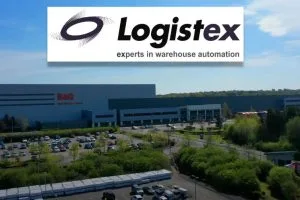Cope with Covid and prepare for Peak
The Covid crisis is prompting companies to invest in automation and robotics to better manage operations, despite facing revenue declines resulting from the pandemic, says Logistex.
There are tens of thousands of new online customers who are likely to persist with the habit, long after lockdown has become a distant memory; new customers whom suppliers will be eager to hold on to. In addition, the need to comply with new social distancing directives, even after the crisis itself subsides, will prompt more industries to accelerate their use of automation.
The pandemic aside, there was always a broader labour force question when it came to manual picking in warehouses. Increasing labour shortages and costs suggest that warehouse operators will need to identify a way to work more efficiently and limit exposure to increasing labour costs. The need for speedy delivery times and the high complexity of handling a wide variety of product types means that to do it manually is becoming impossible. Automation delivers the benefits of being able to control, process, track and manage stock in real time. It reduces labour costs whilst increasing efficiency and accuracy.
If logistics operations are to learn how to adapt to and maximise a new post Covid-19 economy, then order fulfilment strategies, based on automation and robotics, will be vital.
In the short to mid-term, operations will continue to play catch up with ever increasing demand for goods to be delivered for free and as quickly after they’ve been clicked as physically possible. To facilitate this, the rush to develop robotic item picking and final mile delivery systems has been dramatic and with vastly differing levels of success. A robust set of solutions will surely soon be found and will then rapidly proliferate.

We are also seeing significant development in the field of autonomous robotic vehicles (ARV) for use within conventional warehouses and without doubt these devices will reduce the travelling time spent by both human and robotic pickers. This should lead to increased pick efficiency in the warehouse of the future without the need to make wholesale changes to the warehouse infrastructure.
To achieve an adaptable warehouse means designing the most appropriate solution for the customer’s business. An adaptable design needs to consider many factors including material flow, future growth, availability of resource and overall throughput requirements. When considering the introduction of any level of mechanisation, or indeed automation of warehouse processes, it is important that the solution proposed integrates holistically with the whole of the operation. It might be enough to just add a bagging machine to the despatch process to cut down on manpower requirements, but in all likelihood significantly greater savings can be made if the entire operation is reviewed. An experienced solutions integrator should be able to propose a solution which meets the needs of a business both now and in the future. Logistex is an independent automated solutions integrator with no manufacturing ties, meaning that it can design mechanised and automated solutions which use the most appropriate equipment available in the market, not just those manufactured in house. One of Logistex’s most recent partnerships to benefit customers enables Logistex to promote, sell, install and maintain the latest automated pallet shuttle technology from Automha; the Autosatmover. This is the next generation modular system, fully automatic for the automation of multi-depth storage of pallets. The Logistex design team use their skill and experience to analyse the customer’s requirements, design the solution and prove its effectiveness through 3D simulation and emulation prior to implementation.
That said there is no sense in deploying islands of automation in a warehouse if the flow between them is not co-ordinated by a sophisticated warehouse execution system. Logistex’s LWS Reflex software seamlessly integrates point automation into an integrated solution whilst providing the management team clear real-time visibility of the overall operation and comprehensive management information through its complementary Business Intelligence system Analytex.
Protect your investment
Having invested in automation to realise these benefits, a company needs to protect that investment so that the system continues to deliver over many years with minimal disruption. This is the responsibility of engineering maintenance. Engineering maintenance is a critical part of any business where automation systems are used. It is often seen as a “necessary evil” and its importance to the success of the business is easily overlooked.
For over 30 years Logistex have provided a wide range of support and maintenance services. From residential maintenance teams embedded on customers sites, and field engineers that visit sites on a periodic basis to carry out maintenance and repair activities, to 24/7 remote support for PLC and warehouse management systems, Logistex provides the full range of services you would expect from a professional MHE automation provider.
In addition to full maintenance and service facilities – including site-based teams where required – Logistex are carrying out more and more major refurbishment projects on existing systems. In these challenging times, clients appreciate that they can considerably extend operational life – with improved performance and reliability of their equipment – at a fraction of the cost of new and without disruption to their operations.
Prepare for Peak
The Golden Quarter, also known as ‘Peak’ is, for many retailers, the most important and most challenging time of the year. Many spend the first 9 months of the year just building up and preparing for this period.
So why is it such a challenge?
The aim of the game is to sell as many items of stock as possible, but of course when you have a sudden spike for demand, you have to ensure you have the right stock with the right sizes and colours available when the demand hits, otherwise you will be letting your customers down at a critical time which they unfortunately do not forget!
What does this actually mean? Well, for example, an average retailer’s distribution centre may hold around 5 million ‘items’ of stock on any normal day. Given that they may roughly require a further 40% stock holding for the peak period alone, they must find space and process for a further 2 million items!
Resource
Given the above, you then need to be able to increase your staff holding by a similar percentage in a short space of time. Imagine taking on a few hundred extra staff that all need an induction and training on process, not just for the normal operating way but for peak challenging ways!
Equipment/Automation
To be able to cope with the ever-growing demand on retailers, following the expectations of us the consumers wanting their items straight away, Automation is pretty much a necessity. But, if there is ever a time that equipment failure hurts you the most, it has to be peak! Potentially thousands of customer orders, and hundreds of staff stood around waiting for the magic green button to be pushed again to get the system back running.
It’s so critical that all equipment is in its prime condition ready to cope with the demands put on it through this period. Servicing and repairs, although they may cause inconvenience during other times, are certainly the better trade off than unexpected downtime during the busiest time of the year!
Operations
If the stock holding is correct, you have the right resource in place and the Automation runs as you would hope, operations still have to conduct small miracles every day throughout and leading up to this quarter to ensure the customers’ needs are met.
Having said all that… We wouldn’t have it any other way! The golden quarter, although the most challenging time for retailers, let’s not forget how magical a time it is!
So the final points would be to stock up, resource up and look after your assets, then enjoy the ride and take satisfaction in knowing you have delivered millions of smiles on Christmas day!
For more information, visit www.logistex.com





